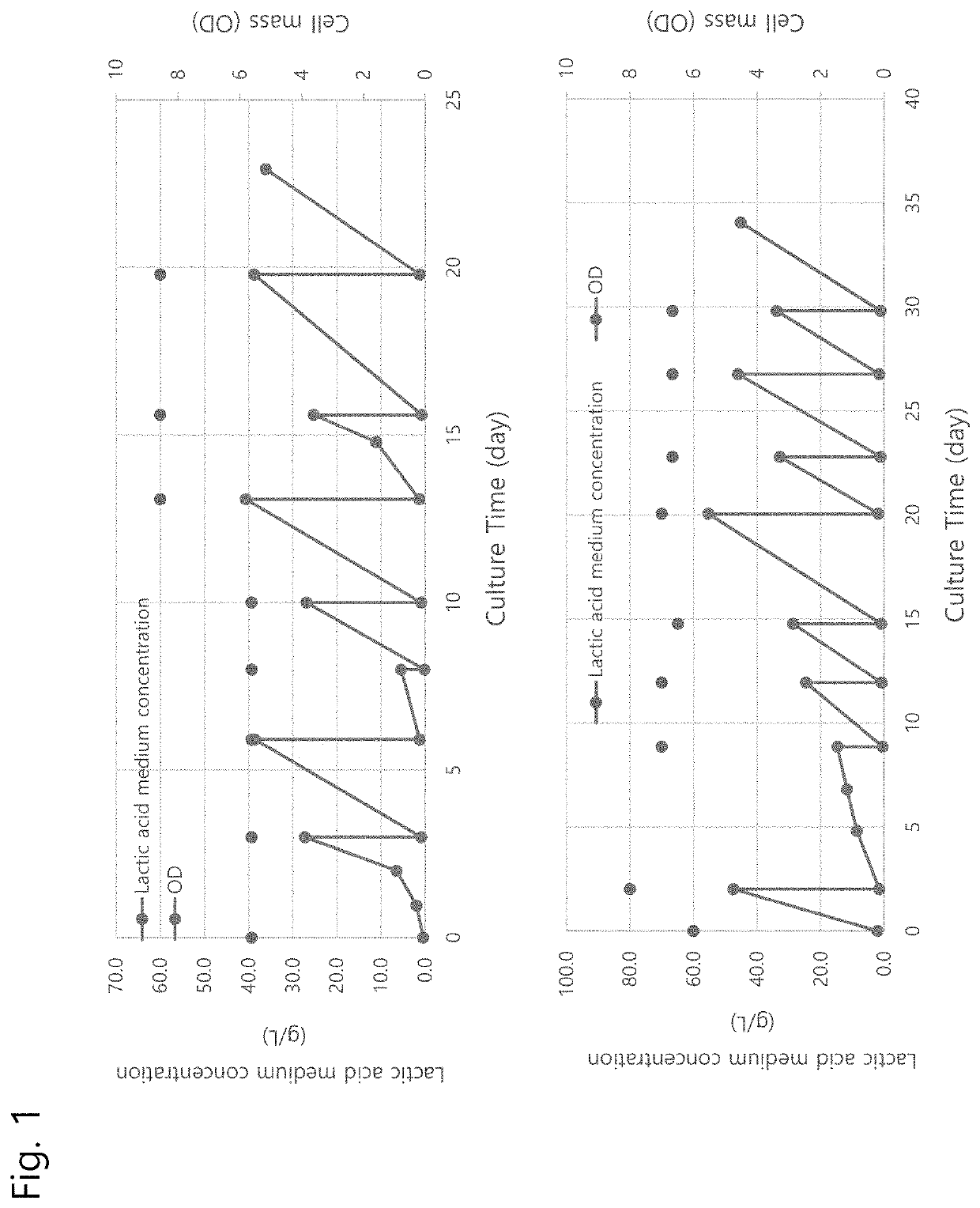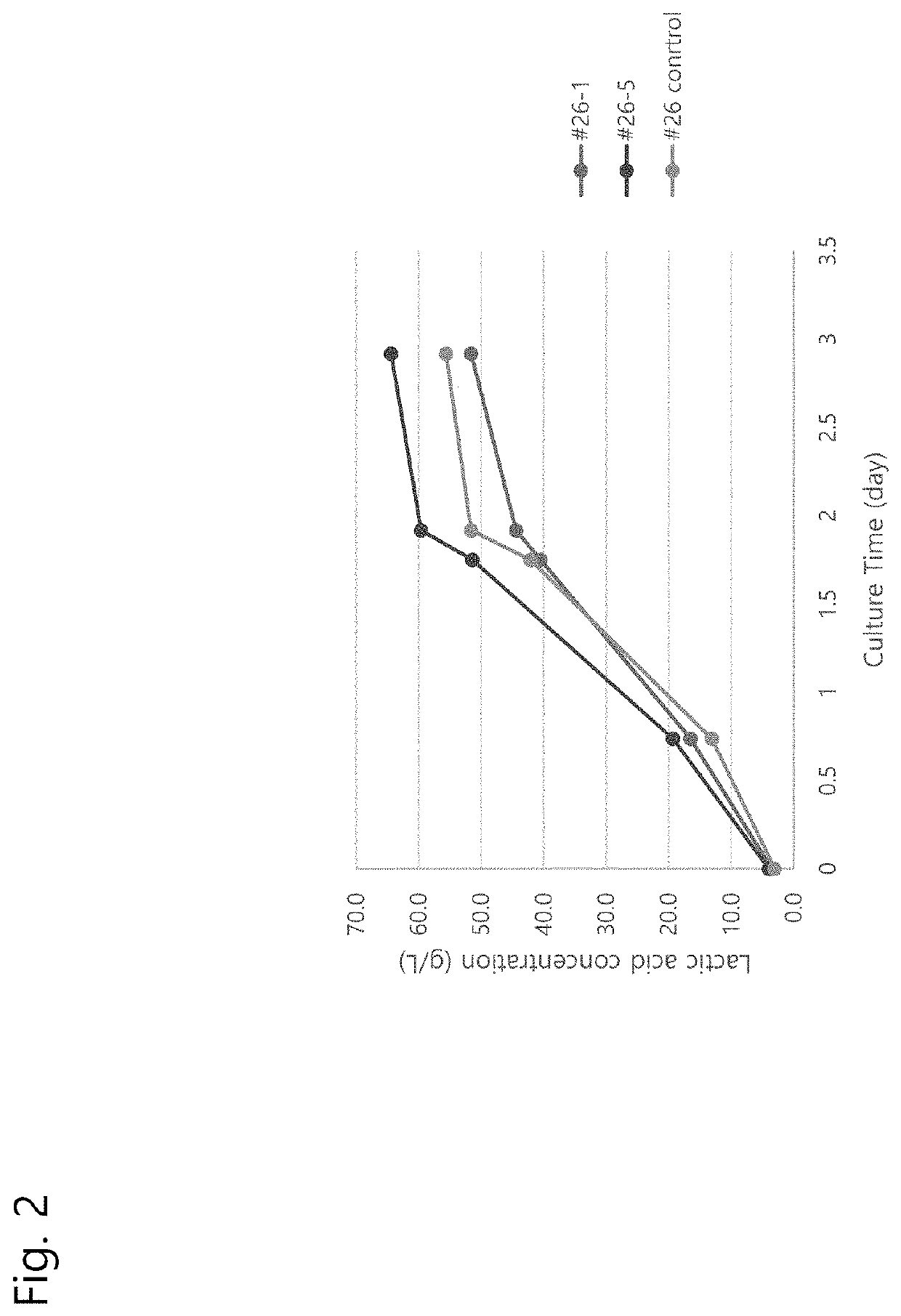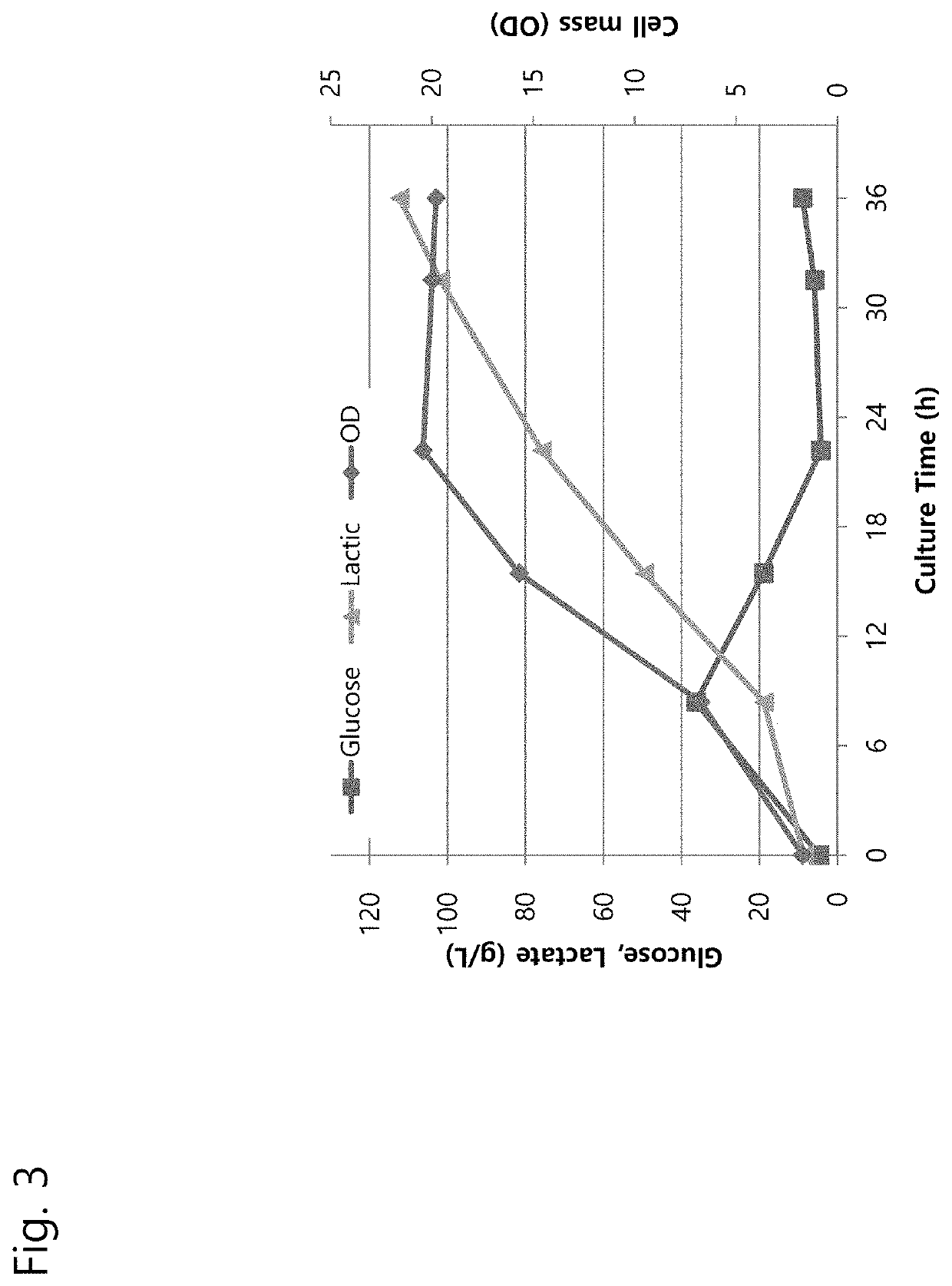Recombinant acid-resistant yeast having improved lactic-acid-producing ability
a technology of lactic acid and recombinant acid, which is applied in the direction of lyase, carbon-carbon lyase, enzymology, etc., can solve the problems of deteriorating economic feasibility, large amount of expensive nutrients to be used, and deteriorating process efficiency, so as to reduce the cost of fermentation and production of ethanol, the effect of reducing the cost of subsequent purification processes
- Summary
- Abstract
- Description
- Claims
- Application Information
AI Technical Summary
Benefits of technology
Problems solved by technology
Method used
Image
Examples
example 1
Evolution #1 of Acid-Resistant Strain YBC
[0091]In the previous research, the present inventors selected strains having acid resistance through testing on various yeast strains and determined the strain having the best acid resistance, namely, the YBC strain, by adding lactic acid to a medium at the beginning of the culture of yeast strains and monitoring the growth and sugar consumption rate of microorganisms, and deposited the strain with the accession number KCTC13508BP with the Biological Resource Center in the Korea Research Institute of Bioscience and Biotechnology.
[0092]Phylogenetic analysis showed that the YBC strain (KCTC13508BP) is a strain similar to S. cerevisiae, is diploid, and is Crabtree-positive.
[0093]The YBC5 strain genetically modified from the corresponding YBC strain achieved a yield that could be commercialized by suppressing the consumption of lactic acid and suppressing glycerol production while minimizing inhibition of ethanol production (Korean Patent Applic...
example 2
Evolution #2 of Acid-Resistant Yeast Strain YBC
[0116]The #26 strain selected in the 1st round of adaptive evolution of Example 1 had an increase in performance compared to YBC5 (refer to the result of comparison with YBC5 in Table 4), but did not reach the performance to suit commercialization, so further operation for improvement was performed.
[0117]Since the #26 strain had an increase in resistance to lactic acid concentration, the culture was started at a high concentration of lactic acid and the number of subcultures at each concentration increased. The culture was performed without the addition of CaCO3, a neutralizing agent, in order to improve the growth properties under extreme conditions.
[0118]The lactic acid that is used was prepared by removing impurities from a medium actually produced through fermentation with a 0.2 μm filter, and then performing concentration to prepare a 40-50% solution, and then mixed with an YP medium (20 g / L peptone, 10 g / L yeast extract) depending...
example 3
n of Gene Expression Before and after Adaptive Evolution
[0123]In this example, changes in gene expression for YBC5 and #26-5 due to adaptive evolution were observed based on qPCR. Total RNA was extracted from samples cultured in each YPDU medium at 30° C. and 200 rpm for 24 hours, the RNA was analyzed through NGS, and then the change in the expression level of the same gene was analyzed and shown in Table 6.
[Table 6]
[0124]Changes in gene expression of YBC5 and #26-5 strains and corresponding genes, Category A: Product related, Category B: Zinc finger protein, Category C: Sulfate / Sulfite related protein, Category D: Stress response, Category E: Hexose transporter
FoldContig IDChange*Uniprot annotation result of ContigSEQ ID NO:Categoryc2862_g1_i1−17.8sp|P56511|LDH_LACPE L-lactate18Adehydrogenase OS = Lactobacillus pentosusGN = ldh PE = 1 SV = 1c4821_g17_i32.00sp|P32467|HXT4_YEAST Low-affinity glucose19Etransporter HXT4 OS = Saccharomycescerevisiae (strain ATCC 204508 / S288c)GN = HXT4 P...
PUM
 Login to View More
Login to View More Abstract
Description
Claims
Application Information
 Login to View More
Login to View More - R&D
- Intellectual Property
- Life Sciences
- Materials
- Tech Scout
- Unparalleled Data Quality
- Higher Quality Content
- 60% Fewer Hallucinations
Browse by: Latest US Patents, China's latest patents, Technical Efficacy Thesaurus, Application Domain, Technology Topic, Popular Technical Reports.
© 2025 PatSnap. All rights reserved.Legal|Privacy policy|Modern Slavery Act Transparency Statement|Sitemap|About US| Contact US: help@patsnap.com



